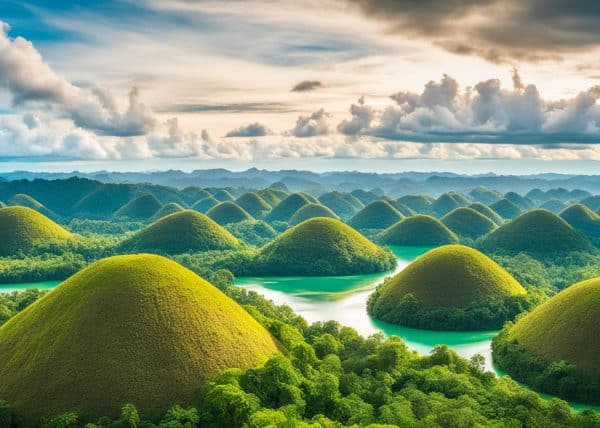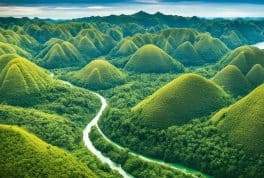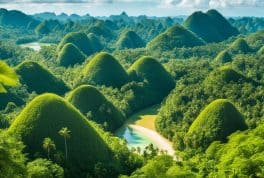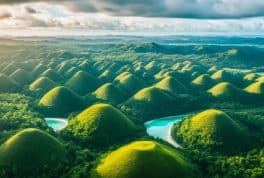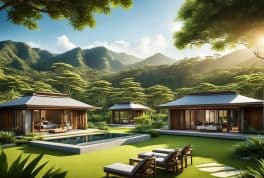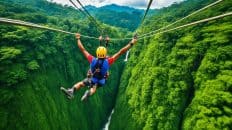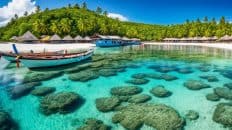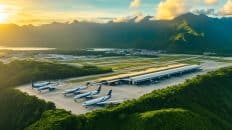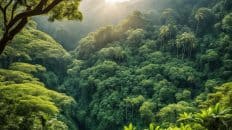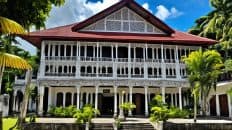Bohol Island
Bohol, nestled in the Central Visayas region of the Philippines, is a blend of natural beauty and cultural richness. Famous for its Chocolate Hills and the tiny Philippine tarsier, the island enchants with its rolling landscapes and diverse wildlife. Bohol's pristine beaches, particularly on Panglao Island, offer crystal-clear waters ideal for snorkeling and diving. Rich in history, it features landmarks like the Baclayon Church and the Blood Compact Shrine. With its welcoming atmosphere and sustainable tourism practices, Bohol is a captivating destination for travelers seeking a mix of serenity and adventure.
Top 10 things to see in Bohol
- Chocolate Hills: These are arguably the most iconic attraction in Bohol. These unique geological formations, numbering over 1,000, are named for their resemblance to chocolate mounds during the dry season. A visit here offers breathtaking panoramic views.
- Philippine Tarsier Sanctuary: Get a close-up look at one of the world's smallest primates, the Philippine tarsier. These nocturnal creatures are endemic to the Philippines, and the sanctuary is dedicated to their conservation.
- Panglao Island: Known for its stunning beaches and world-class diving spots, Panglao Island is a paradise for beach lovers and divers. Alona Beach is particularly famous for its white sandy shore and vibrant nightlife.
- Loboc River Cruise: Enjoy a scenic and relaxing cruise along the Loboc River, often accompanied by a buffet meal and live music. The river's emerald green waters and lush banks create a serene environment.
- Baclayon Church: One of the oldest stone churches in the Philippines, the Baclayon Church dates back to the 16th century. It’s a great place to explore the Spanish colonial influence on the island.
- Hinagdanan Cave: This naturally lighted cavern is a marvel of stalactite and stalagmite formations. It also features a deep lagoon where visitors can take a refreshing dip.
- Blood Compact Shrine: This historical landmark commemorates the first treaty of friendship between the Spanish and Filipinos. A bronze statue depicts the blood compact between Spanish explorer Miguel López de Legazpi and Datu Sikatuna, a local chieftain.
- Man-Made Forest: Stretching over two kilometers in the towns of Loboc and Bilar, this mahogany forest is a testament to successful reforestation efforts. The dense tree canopy provides a beautiful backdrop for photos.
- Balicasag Island: A haven for divers and snorkelers, Balicasag Island is surrounded by vibrant coral reefs teeming with marine life. It's an ideal spot for underwater exploration.
- Bohol Bee Farm: This farm offers insights into organic farming and beekeeping. Tourists can enjoy organic food dining, learn about sustainable farming practices, and even participate in handicraft making.
Guides and Tours
Cities on Bohol
- Tagbilaran City
- Dauis City
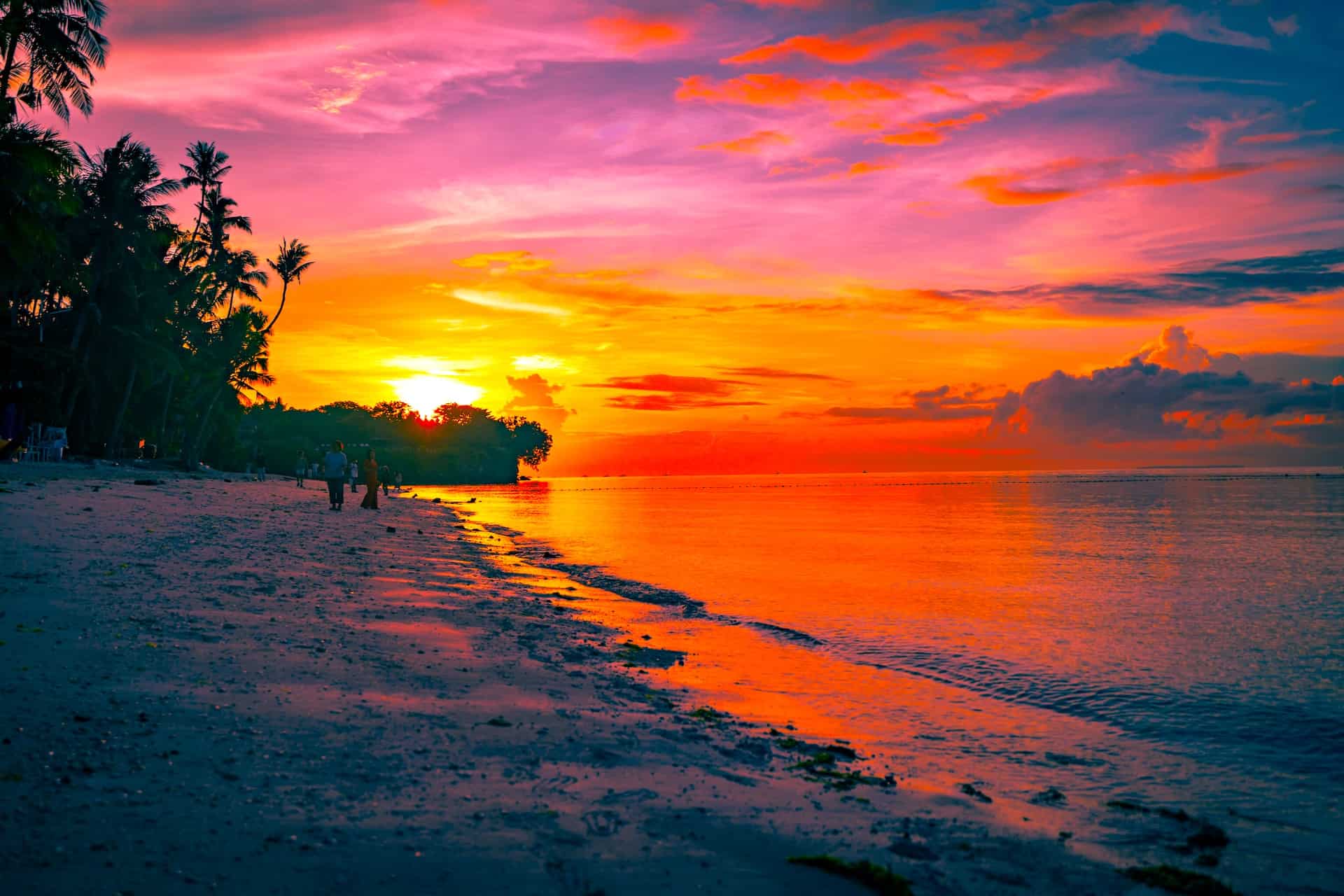
Top 10 Questions and Answers about Bohol
1. What are the Chocolate Hills and why are they famous?
- The Chocolate Hills are a unique geological formation in Bohol, consisting of over 1,268 perfectly cone-shaped hills spread over an area of more than 50 square kilometers. They are called 'Chocolate' Hills because during the dry season, the grass-covered hills turn brown, resembling chocolate mounds. They are famous for their unusual shape and the stunning views they offer.
2. Can you see tarsiers in Bohol?
- Yes, Bohol is home to the Philippine tarsier, one of the world's smallest primates. Visitors can see these tiny, nocturnal creatures at the Philippine Tarsier Sanctuary in Bohol, where efforts are made to protect and conserve their natural habitat.
3. What are the best beaches to visit in Bohol?
- Bohol boasts several beautiful beaches, with Panglao Island being particularly famous for its pristine, white sandy beaches. Alona Beach on Panglao Island is popular for its vibrant atmosphere and clear waters, ideal for swimming and snorkeling.
4. Is Bohol a good destination for diving and snorkeling?
- Absolutely, Bohol is an excellent destination for diving and snorkeling. The waters around Bohol, especially near Panglao Island, Balicasag Island, and Pamilacan Island, are known for their rich marine biodiversity, making them ideal for underwater exploration.
5. What cultural experiences does Bohol offer?
- Bohol offers a wealth of cultural experiences, from historic sites like the centuries-old Baclayon Church to traditional festivals like the Sandugo Festival, which celebrates the historic blood compact between local chieftains and Spanish explorers. The island's culture is also reflected in its music, dance, and handicrafts.
6. How accessible is Bohol for tourists?
- Bohol is quite accessible for tourists. The New Bohol Airport, also known as Panglao International Airport, has improved accessibility, with domestic and limited international flights. Additionally, there are regular ferry services from Cebu and other neighboring islands.
7. What is the significance of the Blood Compact Shrine in Bohol?
- The Blood Compact Shrine in Bohol commemorates the first treaty of friendship between the Spanish and Filipinos. It marks the spot where Spanish explorer Miguel López de Legazpi and Datu Sikatuna, a local chieftain, performed a blood compact, a traditional Filipino ritual of sealing friendship.
8. Are there any environmental conservation efforts in Bohol?
- Yes, Bohol is actively involved in environmental conservation. Efforts include the protection of the Philippine tarsier and their habitat, coral reef preservation around the islands, and sustainable tourism practices to minimize the environmental impact of tourism.
9. What local delicacies should visitors try in Bohol?
- Visitors to Bohol should try local delicacies like 'Ube Kinampay', a purple yam delicacy, 'Calamay', a sweet sticky rice dessert, and fresh seafood dishes. Boholano cuisine offers a variety of flavors that reflect the island's rich culinary heritage.
10. What is the best time of year to visit Bohol?
- The best time to visit Bohol is during the dry season from December to June. This period offers the most favorable weather conditions for beach activities, sightseeing, and other outdoor adventures. The Chocolate Hills are also most striking during the dry season when they take on their famous chocolate brown color.
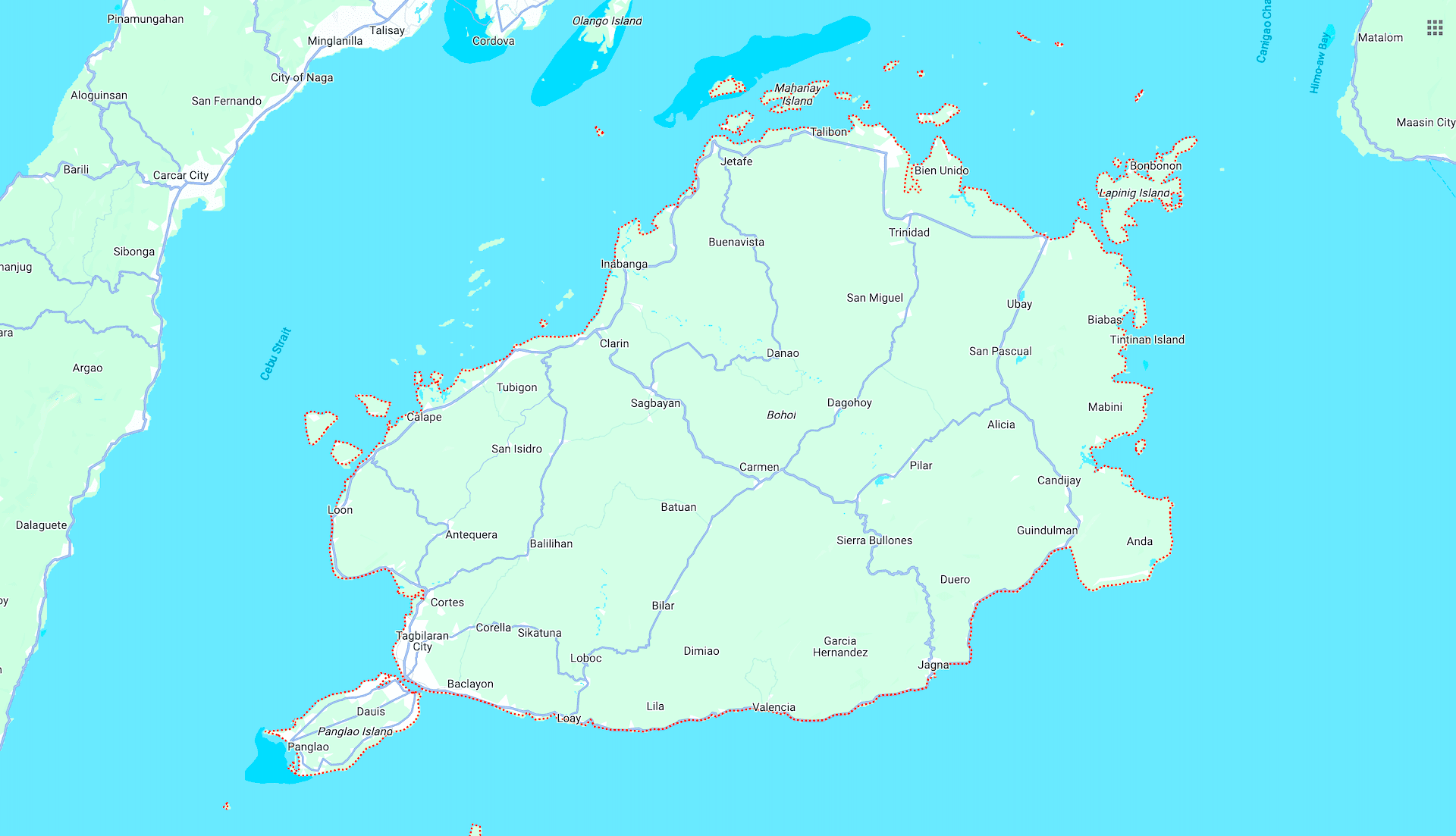
Why you should visit Bohol
Discovering the Hidden Gem of the Philippines: A Journey to Bohol Island
Introduction to Bohol's Enchanting Beauty
In the heart of the Philippines, surrounded by the azure waters of the Central Visayas region, lies Bohol Island – a destination that promises an enchanting escape from the mundane. Renowned for its natural beauty, rich cultural heritage, and warm hospitality, Bohol is a haven for travelers seeking a blend of adventure, relaxation, and cultural immersion. From the iconic Chocolate Hills to the captivating Philippine tarsiers, every aspect of Bohol resonates with the spirit of the Philippines.
The Natural Wonders of Bohol
Chocolate Hills: Nature's Masterpiece
Perhaps the most celebrated feature of Bohol is the Chocolate Hills, a geological marvel that captures the imagination of every visitor. These symmetrical mounds, numbering over a thousand, transform into a rich brown hue during the dry season, resembling giant chocolate drops scattered across the landscape. A visit to the Chocolate Hills offers a panoramic view that is both surreal and breathtaking, making it a must-see for anyone visiting Bohol.
Pristine Beaches and Marine Splendor
Bohol’s coastline is adorned with some of the most beautiful beaches in the Philippines. Panglao Island, in particular, is famous for its white sandy beaches and crystal-clear waters. Ideal for swimming, sunbathing, and snorkeling, the beaches of Bohol provide a perfect setting for relaxation and aquatic adventures. The surrounding waters are also home to vibrant coral reefs teeming with marine life, offering an unforgettable experience for divers and snorkelers.
A Close Encounter with the Philippine Tarsier
The Philippine tarsier, one of the world’s smallest primates, calls Bohol its home. These adorable creatures, with their large, expressive eyes and gentle demeanor, are a symbol of Bohol’s diverse wildlife. The Tarsier Sanctuary in Bohol is dedicated to the protection and conservation of these tiny primates, providing visitors an opportunity to observe them in their natural habitat while learning about conservation efforts.
Cultural Richness and Historical Heritage
A Journey Through Time: Bohol's Historical Landmarks
Bohol's history is as captivating as its landscapes. The island's historical landmarks, such as the Baclayon Church, one of the oldest stone churches in the Philippines, provide a glimpse into the island’s colonial past. The Blood Compact Shrine, commemorating the historic treaty of friendship between local chieftains and Spanish explorers, stands as a testament to Bohol’s rich historical tapestry.
Festivals and Cultural Celebrations
Bohol’s cultural vibrancy comes to life in its festivals and celebrations. The Sandugo Festival, for example, is a colorful and lively event that celebrates the island's history and traditions with street dances, parades, and cultural shows. These festivals not only offer a spectacle of colors and sounds but also provide an insight into the rich cultural heritage of Bohol.
Eco-Tourism and Sustainable Practices
Bohol: A Model of Sustainable Tourism
In recent years, Bohol has emerged as a leader in sustainable tourism. Efforts to preserve its natural and cultural assets are evident in the management of tourist spots and the promotion of eco-friendly practices. The island’s commitment to sustainability ensures that its natural beauty and cultural integrity are preserved for future generations, making Bohol an exemplary destination for eco-conscious travelers.
Bohol’s Flora and Fauna: A Treasure Trove of Biodiversity
Bohol’s commitment to environmental conservation is also reflected in its efforts to protect its diverse flora and fauna. From the mahogany forests to the marine sanctuaries, Bohol is a haven for nature lovers and wildlife enthusiasts. The island’s biodiversity is not only a source of natural beauty but also plays a crucial role in maintaining the ecological balance.
Experiencing Bohol’s Local Cuisine and Crafts
A Taste of Bohol: Culinary Delights
A trip to Bohol is incomplete without indulging in its culinary offerings. The island's cuisine is a delightful blend of traditional Filipino flavors with a unique Boholano twist. From fresh seafood to organic farm-to-table experiences, Bohol offers a gastronomic journey that tantalizes the taste buds. The Bohol Bee Farm, for instance, is a must-visit for its organic dishes and honey-based products.
Handicrafts and Local Artistry
Bohol is also home to a rich tradition of handicrafts and artistry. Local markets and craft centers offer a range of products, from handwoven baskets to beautifully crafted souvenirs, showcasing the skill and creativity of Boholano artisans. These crafts not only make for perfect mementos but also support the local economy and preserve traditional art forms.
Conclusion: Why Bohol Should Be Your Next Destination
In conclusion, Bohol Island is a destination that offers something for every traveler. Whether it’s the allure of its natural wonders, the richness of its cultural heritage, or the warmth of its people, Bohol provides an experience that is both enriching and unforgettable. With its commitment to sustainability and conservation, Bohol stands as a beacon of responsible tourism, inviting travelers to explore its beauty while respecting and preserving its natural and cultural treasures. A visit to Bohol is more than just a vacation; it’s a journey into the heart of the Philippines, a journey that leaves you with memories to cherish for a lifetime.
Top 9 Hotels on Bohol
- Matilde B&B (Carmen): Offers mountain views, air-conditioned rooms, free WiFi, and an American cuisine restaurant.
- The Acacia Glamping Park (Carmen): Unique glamping experience with a garden, restaurant, and fitness center.
- Barril Green Homestay (Batuan): Eco-friendly homestay with garden, shared lounge, and family amenities.
- Sweet Home Boutique Hotel (Tagbilaran): Modern amenities, in-house restaurant, and a variety of breakfast options.
- Dayview Tourist Home (Tagbilaran): Offers free WiFi, private parking, and additional services like bike and car hire.
- Gomez Guest House (Tagbilaran): Budget accommodation with private bathrooms and some rooms featuring a fully equipped kitchen.
- Casa Amihan (Anda): 5-star hotel with private beach, outdoor pool, and activities like snorkeling and kayaking.
- Three Little Birds Resort (Anda): Pleasant stay with outdoor swimming pool, garden, terrace, and on-site restaurant.
- R&D Traveller's Inn (Anda): Garden, outdoor pool, free WiFi, and Asian breakfast.
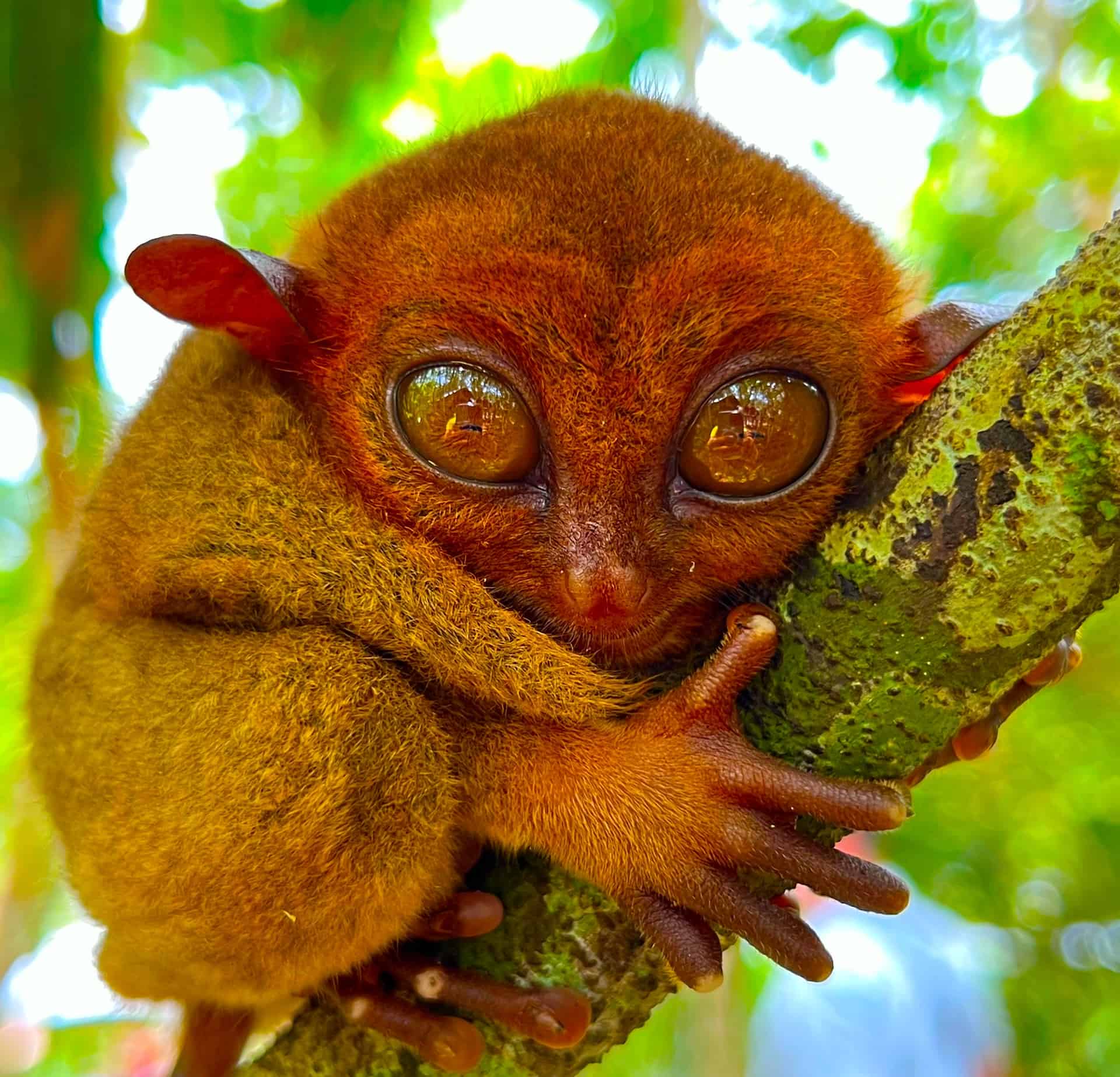
Bohol Island Facts
1. Introduction to Bohol: A Jewel in the Philippine Archipelago
Nestled in the heart of Southeast Asia, the Philippine archipelago is home to over 7,000 islands, each offering its unique charm and character. Among these is Bohol, an island province that captures the essence of the Philippines' natural beauty, rich history, and vibrant culture. Bohol is not just an island but a world of wonders, sitting proudly in the Central Visayas region, flanked by the serene waters of the Camotes Sea to the north and the vast Bohol Sea to the south.
As we embark on an exploration of Bohol, it becomes apparent why this island is often considered a microcosm of the entire Philippine archipelago. Covering an area of approximately 4,821 square kilometers, Bohol is the tenth largest island in the Philippines. Despite its relatively modest size, Bohol packs a diverse range of landscapes – from pristine beaches and coral reefs to lush forests and the famed Chocolate Hills.
Bohol's geography is a testament to the island's dynamic natural history. The Chocolate Hills, a peculiar and iconic geological formation, consists of over 1,268 grass-covered hills. These conical mounds, spread over an area of more than 50 square kilometers in the towns of Carmen, Batuan, and Sagbayan, turn brown during the dry season of summer, transforming the landscape into a seemingly endless row of chocolate kisses. This unique topographical feature is so significant that it has been integrated into the province's flag and seal.
The island province of Bohol, aside from its geological wonders, is also a haven for biodiversity. Among its most famous inhabitants is the Philippine tarsier, one of the smallest primates in the world. These tiny creatures, with their large, round eyes and delicate features, have become a symbol of Bohol's rich ecological tapestry. Conservation efforts, particularly in the Tarsier Sanctuary, have been pivotal in ensuring the survival of these enchanting creatures.
Bohol province's coastline is equally mesmerizing, with Panglao Island on the coast of the south side being a standout destination. Known for its white sandy beaches, clear blue waters, and vibrant coral reefs, Panglao Island is a paradise for beach lovers and divers alike. The island, connected to the mainland of Bohol by bridges, is home to some of the province's most luxurious resorts and dive sites, making it a popular spot for both local and international tourists.
The capital of Bohol Province, Tagbilaran City, serves as the main gateway to the island. Tagbilaran, situated on the southwestern part of the island, embodies the blend of urban progress and traditional Filipino charm. The city's streets are lined with historical buildings that tell the story of Bohol's past, including the impact of Spanish forces during the colonial era. Meanwhile, modern developments have brought new life to the city, with the recent construction of the New Bohol Airport, also known as the Panglao International Airport, enhancing connectivity and boosting tourism.
Bohol's location in the Central Visayas region is not just geographically significant; it has played a crucial role in the province's cultural and economic development. The Central Visayas, also known as Region VII, comprises four provinces: Cebu, Negros Oriental, Siquijor, and Bohol. This region is a melting pot of history, culture, and natural beauty, with each province bringing its unique flavor to the table. Bohol, with its rich historical background, stunning natural attractions, and warm, hospitable people, is no exception.
The cultural tapestry of Bohol is woven with threads of history, dating back to the earliest days of Philippine history. The island played a significant role in the country's struggle for independence, with local heroes like Carlos P. Garcia, who later became the eighth President of the Philippines, calling this beautiful island their home province. The influence of various cultures, particularly the Spanish, is evident in the architecture, religion, and traditions that permeate Boholano society.
The total population density of Bohol, as recorded by the Philippine Statistics Authority, mirrors the diversity of the island itself. The people of Bohol, known as Boholanos, are known for their resilience, creativity, and hospitality. With a total population density that is moderate compared to other regions in the Philippines, Bohol offers a balance of bustling community life and serene, untouched landscapes. The island's towns, each with its unique charm, are spread across the landscape, from the bustling capital city of Tagbilaran to the quaint and peaceful town of Sierra Bullones in the north.
Bohol's road network, including the Tagbilaran East Road, plays a crucial role in connecting these towns and cities, making the island's treasures accessible to residents and tourists alike. The roads meander through the island's varied landscapes, offering glimpses of the hills, rivers, and beaches that make Bohol a true paradise.
As we delve deeper into the heart of Bohol, it becomes clear that this island province is more than just a tourist destination; it is a living, breathing testament to the beauty and diversity of the Philippines. From the majestic Chocolate Hills to the tranquil beaches of Panglao Island, from the historic streets of Tagbilaran City to the quiet corners of its rural towns, Bohol invites visitors to experience the Philippines in all its splendor.
In the following sections, we will explore Bohol's rich history, vibrant culture, stunning natural attractions, and much more. Join us as we journey through this enchanting island province, a jewel in the Philippine archipelago, and discover why Bohol is not just a place to visit, but a world to explore.
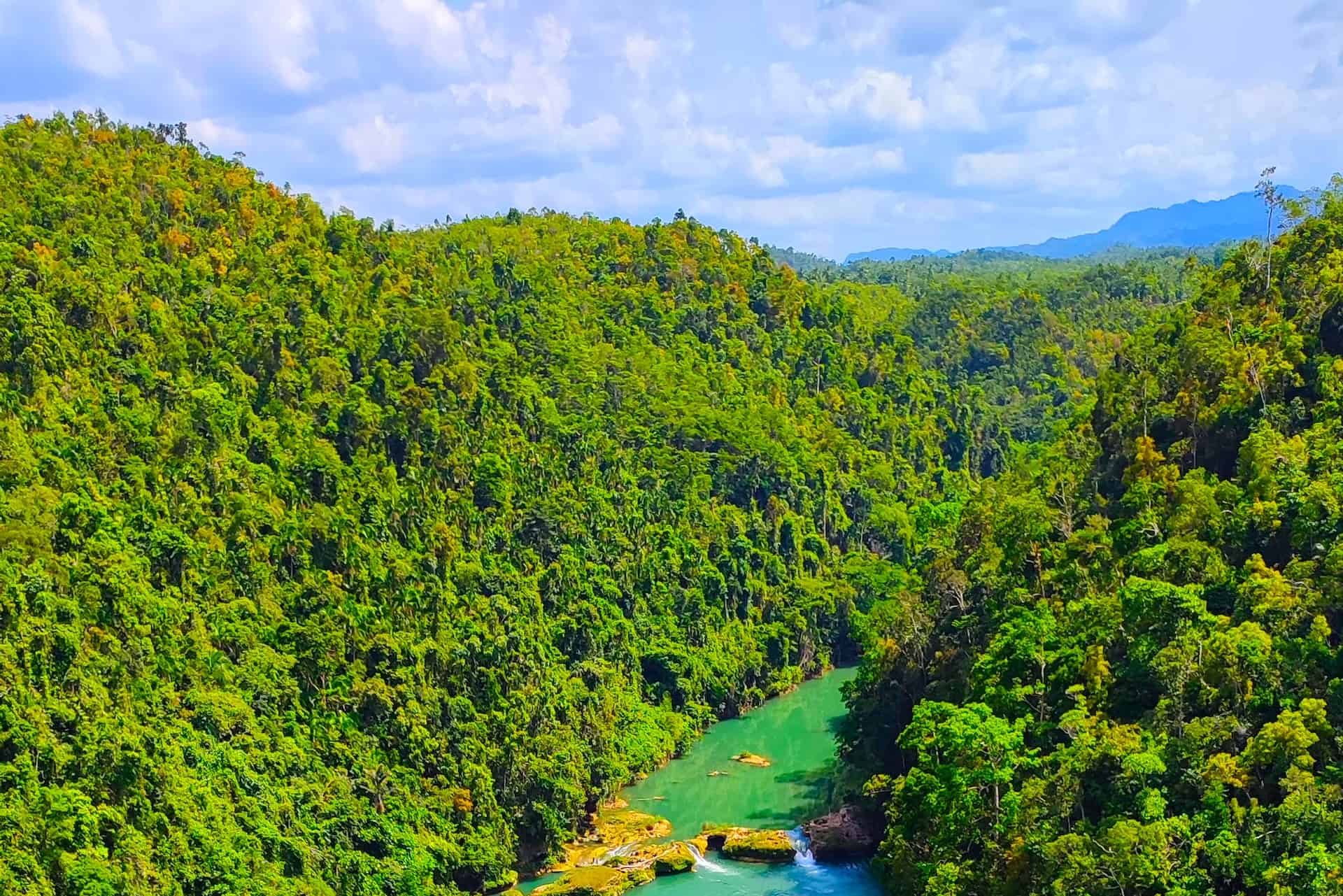
2. Historical Context of Bohol: Tracing the Footsteps of Time
The history of Bohol is as captivating as its landscapes, weaving a rich tapestry that reflects the diverse influences and pivotal events that have shaped the island province into what it is today. This section delves into Bohol's historical journey, highlighting its significance in Philippine history and the influences that have left indelible marks on its cultural fabric.
The Dawn of Bohol's History
Bohol's history dates back to prehistoric times, long before the Spanish forces set foot on the Philippine archipelago. Archaeological findings, including ancient artifacts and remnants of old settlements, suggest that the island was inhabited thousands of years ago. These early inhabitants laid the foundation for a culture and society that would evolve over centuries, adapting to the changing tides of time and history.
The island's strategic location in the Central Visayas region made it a hub for trade and cultural exchange. As a result, Bohol became a melting pot of influences from neighboring islands and distant lands. This confluence of cultures is evident in the island's traditions, language, and customs, which are a blend of indigenous practices and external influences.
The Spanish Era and Bohol's Resistance
The arrival of Spanish forces in the 16th century marked a turning point in Bohol's history. The Spanish colonization brought significant changes, including the introduction of Christianity, which had a profound impact on the cultural and social landscape of the island. However, the Boholanos' spirit of resistance was evident in their response to foreign domination.
One of the most notable uprisings against Spanish rule was the Bohol Rebellion led by Francisco Dagohoy, a local hero whose legacy is still celebrated in Bohol today. The Dagohoy Rebellion, the longest revolt in Philippine history, was a testament to the Boholanos' resilience and their fierce desire to protect their land and freedom.
The American Period and World War II
Following the Spanish-American War, Bohol, like the rest of the Philippines, came under American rule. This period brought new changes, including the introduction of the public education system and democratic governance. However, it was also a time of continued struggle for autonomy and self-determination.
World War II saw Bohol playing a significant role in the resistance against Japanese occupation. The island became a haven for guerrilla fighters and a base for Allied forces. The courage and bravery of the Boholanos during this tumultuous period are a crucial chapter in the island's history and the broader narrative of Philippine resistance during the war.
Carlos P. Garcia: A Son of Bohol
Among the notable figures in Bohol's history is Carlos P. Garcia, a native of the island who rose to become the eighth President of the Philippines. Garcia's presidency, marked by his "Filipino First Policy," was instrumental in promoting national identity and cultural pride. As a son of Bohol, his contributions to the island and the country are a source of pride for Boholanos and an essential part of the province's historical narrative.
Post-War Reconstruction and Modern Developments
In the aftermath of World War II, Bohol embarked on a journey of reconstruction and development. The post-war era was a time of rebuilding, not just in terms of infrastructure but also in revitalizing the spirit and resilience of its people. This period saw significant efforts to restore damaged structures, revive the economy, and rebuild communities.
The latter part of the 20th century and the early 21st century witnessed remarkable progress in Bohol. The establishment of new roads, such as the Tagbilaran East Road, improved connectivity and opened up land area to new opportunities for growth. The development of a new airport, the New Bohol Airport, also known as the Panglao International Airport, marked a milestone in the island's modernization, enhancing its accessibility and boosting its appeal as a tourist destination.
Bohol in Philippine History
Throughout its history, Bohol has played a significant role in the tapestry of Philippine history. The island's journey from a pre-colonial settlement to a modern province reflects the broader narrative of the Philippines – a story of resilience, diversity, and the unyielding spirit of its people. Bohol's historical landmarks, from the Blood Compact site commemorating the first treaty of friendship between Spaniards and Filipinos to the heritage churches dotting the landscape, are testaments to the island's rich historical heritage.
Preserving Bohol's Historical Legacy
Today, Bohol's historical legacy is preserved through various initiatives, including museums, cultural programs, and heritage conservation efforts. These endeavors ensure that the stories of the past continue to be told and that the lessons of history are passed down to future generations. As Bohol looks to the future, its history remains a guiding light, shaping its path forward and reminding its people of their roots and identity.
As we explore the historical context of Bohol, it becomes clear that the island is not just a geographical entity in the Philippine archipelago but a living chronicle of the nation's past. From the early days of its settlement to its role in Philippine history and modern developments, Bohol's story is a fascinating journey through time. In the next sections, we will delve into the geographical and environmental aspects of Bohol, uncovering the natural wonders that make this island province a unique and enchanting destination.
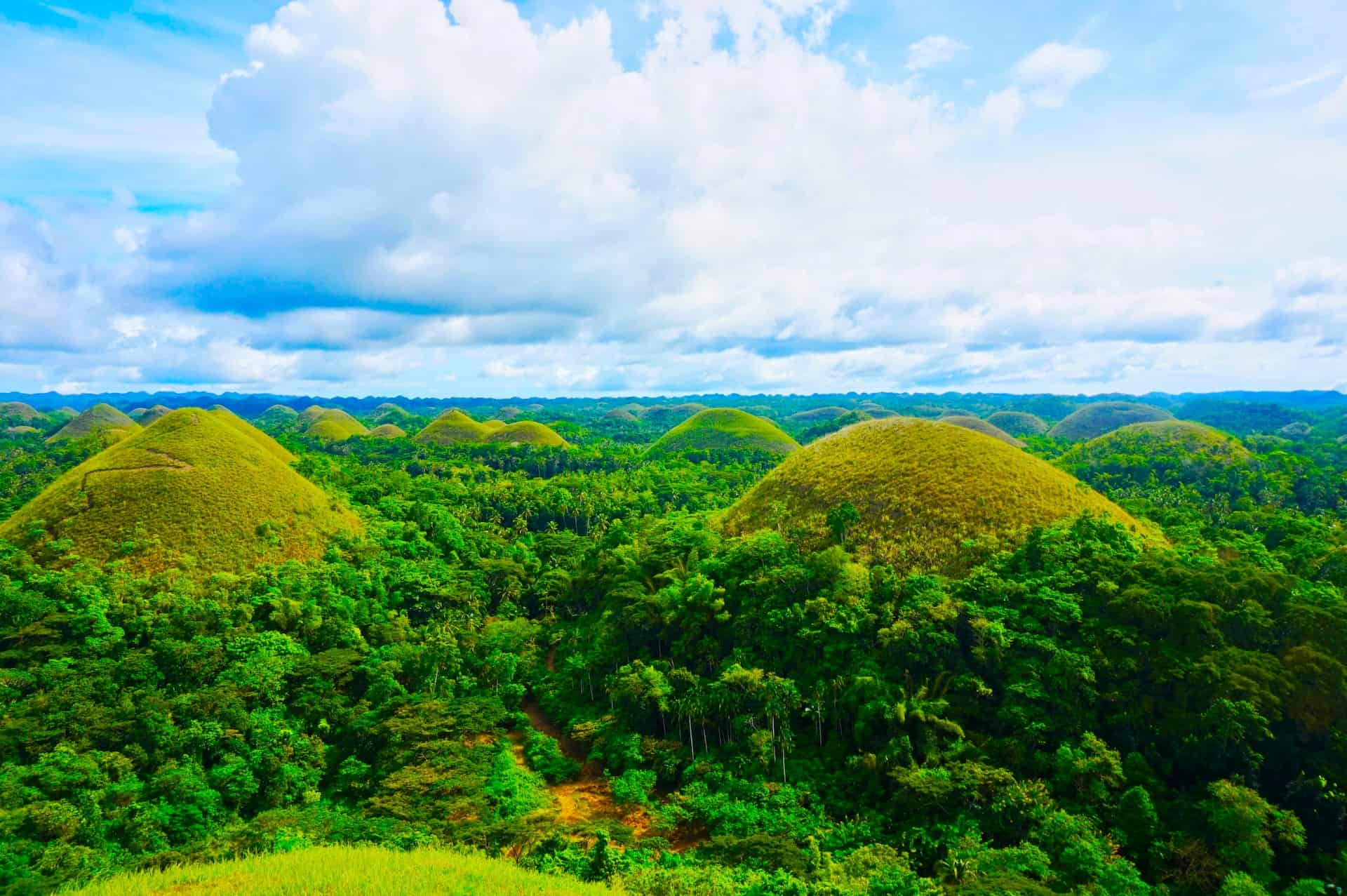
3. Bohol's Geography and Environment: A Tapestry of Nature's Wonders
Nestled in the heart of the Philippine archipelago, Bohol is a province that boasts a rich tapestry of geographical wonders and diverse ecosystems. This section explores the varied landscapes of Bohol, from its iconic Chocolate Hills to its lush forests and stunning coral reefs, painting a picture of an island that is as varied in its geography as it is rich in natural beauty.
The Landscapes of Bohol
Bohol's geography is a study in contrasts. The island, part of the Central Visayas region, features a range of landscapes that include rugged hills, serene rivers, and idyllic beaches. The most famous of these natural wonders are the Chocolate Hills, a unique geological formation that has become synonymous with Bohol. Spread across the towns of Carmen, Batuan, and Sagbayan, these grass-covered hills number over 1,268 and are spread over an area of more than 50 square kilometers. During the dry season, the grass turns brown, giving the hills their chocolate-like appearance and earning them their delightful name.
The Chocolate Hills are not just a tourist attraction; they are a symbol of Bohol's unique natural heritage. These conical hills, mostly uniform in shape, have puzzled geologists for years, with various theories proposed about their formation. The most widely accepted explanation is that they are the result of the uplift of coral deposits and the action of rainwater and erosion.
Bohol's Coastal and Marine Splendor
*Bohol province is surrounded by the Bohol Sea to the north the south and the Camotes Sea to the northeast coast and the north, lending it a rich marine environment. The island province is famous for its coral reefs, which are among the most biodiverse in the world. Panglao Island, on the south side of Bohol, is particularly renowned for its diving spots and beautiful beaches, attracting tourists and marine enthusiasts from around the globe.
The coral reefs around Bohol are not just stunning in their beauty; they are also vital to the marine ecosystem, providing habitat for a myriad of marine species. Efforts to preserve and protect these coral reefs are ongoing, with marine sanctuaries established to ensure the sustainability of these natural treasures.
Bohol's Flora and Fauna: A Biodiversity Hotspot
Bohol's diverse landscapes provide a haven for a wide range of flora and fauna. The island is home to the Philippine tarsier, one of the smallest primates in the world. These tiny creatures, with their distinctive large eyes and nocturnal habits, are a key species in Bohol's ecological landscape. The Tarsier Sanctuary in Bohol is dedicated to the preservation of these fascinating animals, offering a glimpse into their delicate existence.
Apart from the tarsiers, Bohol's forests and rivers are teeming with life. From rare birds to endemic species of plants and trees, the island's ecosystems are a testament to the rich biodiversity of the Philippine archipelago. The man-made forest in Bohol, stretching over two kilometers in the towns of Loboc and Bilar, is another testament to the island's commitment to preserving its natural environment.
Bohol's Environmental Challenges and Conservation Efforts
Like many natural paradises, Bohol faces environmental challenges, including deforestation, habitat loss, and the impacts of climate change. These challenges are met with a proactive approach to environmental conservation. Efforts such as reforestation projects, wildlife sanctuaries, and sustainable tourism initiatives are at the forefront of preserving Bohol's natural beauty for future generations.
The government of Bohol, in collaboration with local communities and environmental organizations, has implemented various programs aimed at protecting the island's natural resources. These include the establishment of marine protected areas, community-based forest management programs, and ecotourism projects that promote environmental awareness and sustainable practices.
The Significance of Bohol's Natural Heritage
Bohol's geographical and environmental attributes are not just vital for their ecological value; they are also a cornerstone of the island's identity and a source of pride for its inhabitants. The natural landscapes of Bohol are deeply intertwined with the cultural and historical fabric of the island, shaping its traditions, livelihoods, and the very way of life of Boholanos.
The island's natural wonders are also a key driver of its economy, particularly through tourism. The allure of the Chocolate Hills, the pristine beaches of Panglao Island, and the enchanting world of the tarsiers draw visitors from all corners of the globe, making Bohol one of the most visited destinations in the Philippines.
Exploring Bohol's Natural Wonders
For those who venture to this enchanting island, Bohol offers a myriad of experiences. Whether it's marveling at the grandeur of the Chocolate Hills, diving into the vibrant underwater world of its coral reefs, or encountering the mystical tarsiers, Bohol provides a window into the natural wonders of the Philippine archipelago. The island's rivers and caves offer opportunities for adventure, while its tranquil beaches provide a perfect escape for relaxation and rejuvenation.
Bohol's commitment to preserving its natural heritage while welcoming visitors to experience its beauty is a delicate balance. Through sustainable tourism practices, Bohol continues to showcase its environmental wonders while ensuring that they remain unspoiled for future generations.
Conclusion
Bohol's geography and environment are a testament to the island's rich natural heritage. From its iconic Chocolate Hills to its verdant forests and vibrant coral reefs, Bohol is a microcosm of the natural beauty of the Philippines. As we continue to explore the facets of this remarkable island province, we are reminded of the importance of preserving these natural wonders, not just for their ecological value but for their role in defining the identity and character of Bohol.

4. Population and Demographics of Bohol: A Mosaic of People and Cultures
In the heart of the Central Visayas region, the island province of Bohol stands as a beacon of cultural diversity and demographic complexity. This section delves into the intricate tapestry of Bohol's population and demographics, exploring the unique blend of people, traditions, and lifestyles that shape the social landscape of this enchanting island.
The People of Bohol: An Overview
Bohol, a province rich in history and natural beauty, is equally renowned for its warm and resilient people. According to the Philippine Statistics Authority, Bohol's population reflects a moderate density compared to land area and to other regions in the Philippines. This demographic composition provides a balanced mix of urban vibrancy and rural tranquility, a testament to the diverse lifestyles that coexist on the island.
The Boholanos, as the inhabitants of Bohol are known, are a people characterized by their strong sense of community, deep-rooted traditions, and a rich cultural heritage. They are predominantly of Visayan descent, sharing linguistic and cultural ties with the larger Visayan community in the Philippines. The primary language spoken is Cebuano, although English and Filipino are widely understood and used, especially in urban areas like the capital city of Tagbilaran.
Urban and Rural Demographics
Tagbilaran City, the capital and main urban center of Bohol, serves as the hub of governance, commerce, and education. The city's population is a mix of native Boholanos and migrants from other parts of the Philippines, creating a melting pot of cultures and backgrounds. The urban setting offers a contrast to the more laid-back lifestyle of the rural areas, where agriculture remains a significant part of daily life.
Bohol's rural landscape is dotted with towns and small villages, each with its distinct character and traditions. The population in these areas is predominantly engaged in farming, fishing, and handicrafts, maintaining a lifestyle that is closely tied to the land and sea. The rural communities of Bohol are often the keepers of the island's traditional crafts and practices, from weaving and pottery to folk dances and festivals.
Demographic Challenges and Opportunities
While Bohol's population enjoys the benefits of a rich cultural heritage and natural environment, the island faces its share of demographic challenges. Issues such as rural-urban migration, employment opportunities, and access to education and healthcare are areas of ongoing focus. The government of Bohol, in partnership with various sectors, is continually working on initiatives to address these challenges, aiming to improve the quality of life for all Boholanos.
One of the critical areas of focus is the development of sustainable livelihoods, particularly in rural areas. By promoting agriculture, eco-tourism, and local industries, the aim is to provide more opportunities for the rural population, reducing the need for migration to urban centers. Education and skills training are also prioritized to equip the younger generation of Boholanos with the tools they need to succeed in a rapidly changing world.
Cultural Diversity and Integration
The cultural diversity of Bohol's population is one of its greatest strengths. The island is home to various religious and ethnic groups, living together in a harmonious blend of beliefs and practices. Festivals and celebrations, such as the Sandugo Festival commemorating the historic Blood Compact, showcase the island's rich cultural tapestry and the spirit of unity among its people.
Integration of different cultures and the preservation of indigenous traditions are crucial aspects of Bohol's social fabric. Efforts to promote cultural understanding and respect for diversity are evident in the island's educational institutions, community programs, and public policies. These initiatives aim to foster a sense of pride in Bohol's heritage while embracing the positive aspects of modernization and cultural exchange.
The Future of Bohol's Demographics
Looking to the future, Bohol's demographic landscape is poised for transformation. With the development of new infrastructure, such as the New Bohol Airport, and the expansion of tourism and business opportunities, the island is attracting a growing number of visitors and new residents. This influx brings both challenges and opportunities, requiring careful planning and management to ensure sustainable growth.
The youth of Bohol are particularly significant in shaping the island's future. With access to education and global connectivity, they bring new ideas and perspectives, driving innovation and change. Their role in preserving Bohol's cultural heritage while navigating the path of modernization is vital to the island's continued development.
Conclusion
The population and demographics of Bohol paint a picture of a province that is as diverse in its people as it is rich in its cultural heritage. From the bustling streets of Tagbilaran City to the serene rural landscapes, the island is a mosaic of different lifestyles, traditions, and aspirations. As Bohol continues to evolve, its people remain at the heart of its story, a story of resilience, diversity, and unity. The next sections of this exploration will delve deeper into the economic and infrastructural aspects of Bohol, revealing how this beautiful island province is navigating the challenges and opportunities of the modern world.
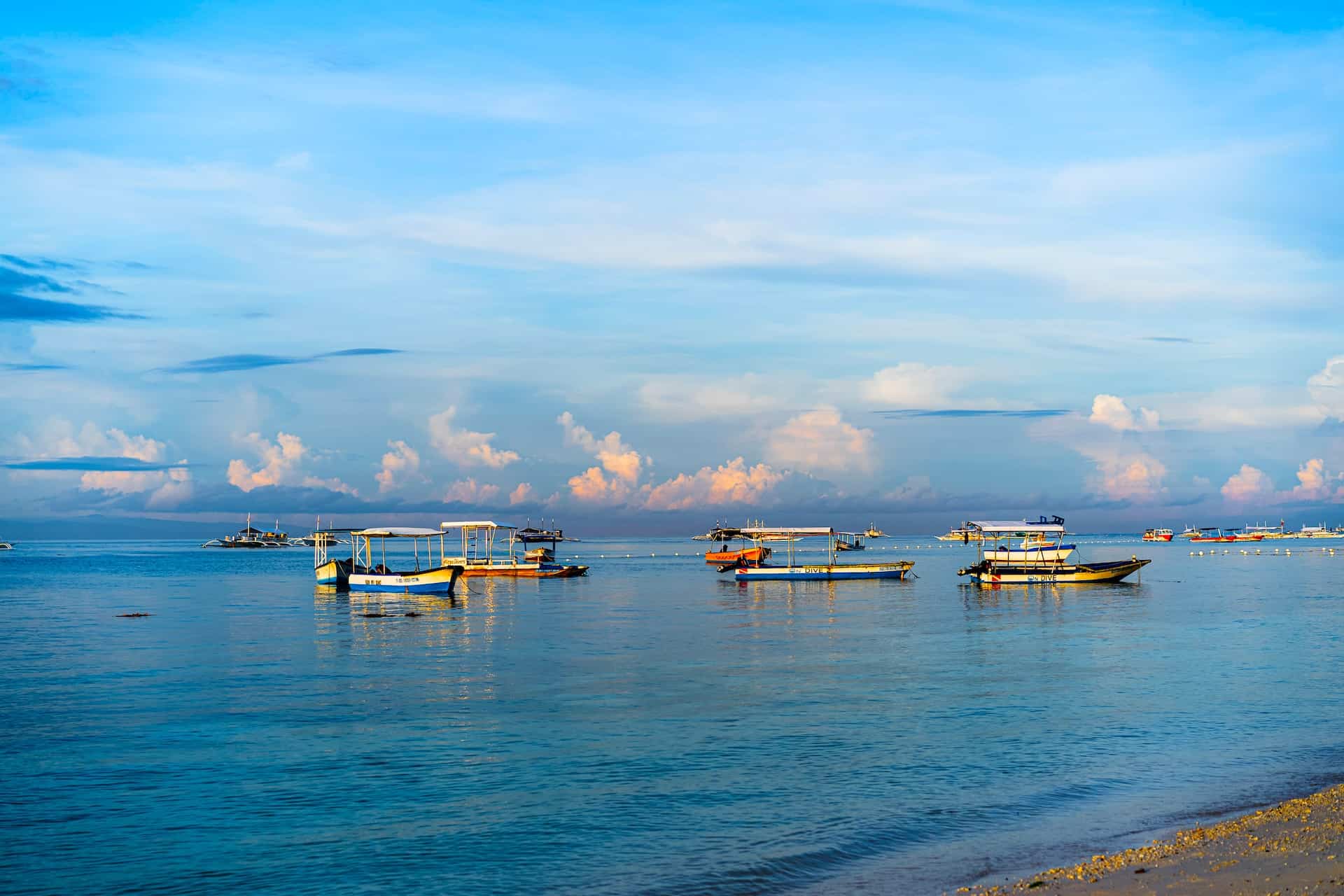
5. Economy and Infrastructure in Bohol: Paving the Path for Progress
Bohol, an island province in the Central Visayas region of the Philippines, is a land where the past and the future converge. In this section, we explore the economic landscape and infrastructural development of Bohol, unraveling how this beautiful island balances its rich traditions with the demands of modern progress.
The Economic Landscape of Bohol
The economy of Bohol, traditionally rooted in agriculture, has undergone significant transformation over the years. The island's fertile land supports a variety of crops, with rice, corn, and coconut being the mainstays. Agriculture remains a critical sector, providing livelihoods for a large portion of the population, particularly in rural areas. However, Bohol's economy is no longer confined to the fields and farms.
In recent years, Bohol has seen a diversification of its economic activities. Tourism has emerged as a major driver of growth, capitalizing on the island's natural beauty and rich cultural heritage. The stunning Chocolate Hills, the enchanting Philippine tarsier, and the pristine beaches of Panglao Island are just a few of the attractions that draw both local and international tourists. The tourism sector has spurred growth in related industries, including hospitality, retail, and transportation, creating new job opportunities and contributing to the overall economic development of Bohol.
Infrastructure: Building the Foundation for Growth
The backbone of Bohol's economic progress is its infrastructure. The government of Bohol, recognizing the importance of connectivity and accessibility, has invested in significant infrastructural projects. The New Bohol Airport, also known as the Panglao International Airport, is a prime example of this investment. Inaugurated in recent years, the new airport, has enhanced Bohol's connectivity with the rest of the Philippines and the world, making it more accessible to tourists and investors.
The road network in Bohol, including the Tagbilaran East Road, has also seen improvements. These roads are crucial for the transport of goods and people, connecting the island's various towns and cities, and facilitating trade and commerce. The development of ports and transportation facilities for sea travel, particularly for routes like Cebu to Bohol, has further integrated Bohol into the regional economy.
Bohol's Industrial and Service Sectors
While agriculture and tourism are the pillars of Bohol's economy, the industrial and service sectors have also shown promising growth. Small and medium-sized enterprises (SMEs) in manufacturing, handicrafts, and food processing are expanding, driven by both local entrepreneurship and external investment. The service sector, particularly banking, retail, and information technology, is growing, reflecting the island's evolving economic landscape.
This economic diversification is a strategic move by the local government and private sector stakeholders. By broadening the economic base, Bohol aims to create a more resilient economy, capable of withstanding external shocks and providing stable employment opportunities for its residents.
Environmental Sustainability and Economic Development
As Bohol pursues economic growth, it faces the challenge of balancing development with environmental sustainability. The island's natural resources, the foundation of its tourism industry, are under pressure from increased human activity and climate change. Recognizing this, Bohol has taken steps to integrate environmental considerations into its development plans.
Efforts include the establishment of marine protected areas to conserve coral reefs, mangrove reforestation programs, and regulations to ensure sustainable tourism practices. The aim is to create a model of development that is not only economically viable but also environmentally responsible, ensuring that Bohol's natural beauty is preserved for future generations.
Education and Human Resource Development
A key component of Bohol's development strategy is the investment in human capital. Education and skills training are prioritized to ensure that the workforce is equipped to meet the demands of a changing economy. Higher education institutions in Bohol, such as the University of Bohol and Bohol Island State University, offer a range of programs that align with the island's economic sectors, from tourism and hospitality to agriculture and technology.
The focus on education is complemented by initiatives in skills training and vocational education, targeting youth and adults alike. These programs are designed to provide the skills needed for employment in both the local and global job markets, empowering Boholanos to be active participants in the island's economic growth.
The Road Ahead: Challenges and Opportunities
As Bohol continues on its path of economic and infrastructural development, it faces both challenges and opportunities. The challenge lies in maintaining the delicate balance between preserving the island's natural and cultural heritage and pursuing economic growth. The opportunity, on the other hand, is in leveraging Bohol's unique assets – its natural beauty, strategic location, and resilient people – to build a sustainable and inclusive economy.
The future of Bohol's economy is poised to be a blend of tradition and innovation. With ongoing infrastructural improvements, a commitment to environmental sustainability, and a focus on human resource development, Bohol is paving the way for a future that is prosperous, sustainable, and reflective of its rich heritage.
Conclusion
The economy and infrastructure of Bohol are at a pivotal point. The efforts to modernize while preserving the island's essence are evident in every sector, from the fields of agriculture to the corridors of new infrastructural developments. As Bohol navigates the complexities of development in the 21st century, it stands as a testament to the possibility of harmonizing progress with tradition. The following sections will explore the facets of Bohol's tourism, unique features, and modern context, further illustrating how this island province is a microcosm of the dynamic interplay between nature, culture, and development.
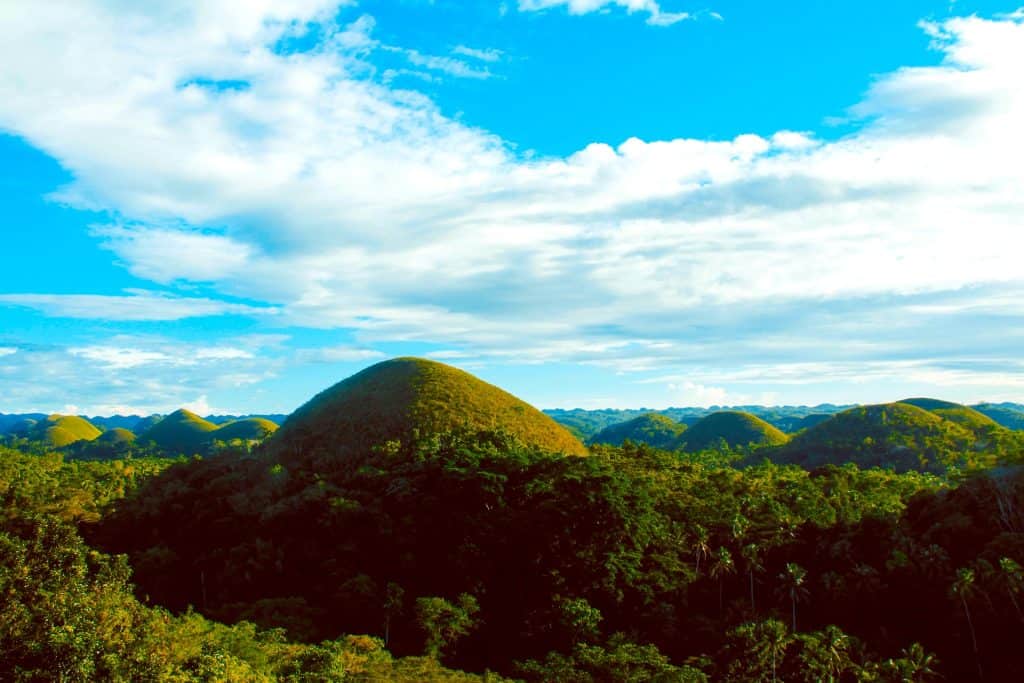
6. Bohol's Thriving Tourism and Its Cultural Tapestry
Bohol, a gem in the Philippine archipelago, is a province where nature's beauty and cultural richness intertwine to create a traveler's paradise. This detailed exploration delves into the tourism industry of Bohol, highlighting its major attractions, cultural heritage, and the sustainable practices that make it a model destination in the Central Visayas region.
The Rise of Tourism in Bohol
Tourism in Bohol has grown exponentially over the years, evolving from a quaint, lesser-known destination to one of the Philippines' most visited provinces. This growth can be attributed to Bohol's incredible array of natural and historical attractions, combined with concerted efforts to promote sustainable tourism practices.
The Chocolate Hills, a geological marvel and undoubtedly Bohol's most iconic landmark, draws thousands of tourists annually. These grass-covered hills, numbering over 1,268, transform into a mesmerizing chocolate-brown color during the dry season, creating a surreal landscape that captivates visitors. The Chocolate Hills Complex has been developed to provide tourists with viewing platforms, allowing them to fully appreciate this natural wonder.
Beyond the hills, Bohol's appeal lies in its biodiversity and environmental conservation efforts. The Philippine tarsier, one of the world's smallest primates, is a significant draw. The Tarsier Sanctuary in Bohol is dedicated to the protection and study of these delicate creatures, offering visitors a chance to see them in their natural habitat while promoting awareness and conservation efforts.
Bohol's Coastal Charms: Panglao Island and Beyond
Bohol's coastline is dotted with stunning beaches and world-class resorts, making it a haven for beach lovers and divers. Panglao Island, located on the south side of Bohol, is renowned for its white sandy beaches, clear waters, and diverse marine life. The island is not only a tourist hotspot but also a crucial area for marine biodiversity, with coral reefs that are among the most biodiverse in the world.
Resorts in Panglao, such as the Bohol Beach Club and South Palms Bohol, offer luxurious accommodations and activities ranging from diving and snorkeling to cultural tours. These resorts are conscious of their environmental impact, implementing sustainable practices to preserve the island's natural beauty.
Cultural Experiences and Festivals
Bohol is not just about natural beauty; it's also a treasure trove of cultural heritage. The island's history is rich with tales of resistance against Spanish forces, manifested in landmarks such as the Blood Compact Site. Additionally, centuries-old churches, like the Baclayon Church, stand as testaments to the island's historical and cultural significance.
Festivals in Bohol are a vibrant expression of its culture and traditions. The Sandugo Festival, commemorating the historic blood compact between local chieftains and Spanish explorers, is a colorful celebration of Bohol's history and friendship with other cultures. These festivals are not only tourist attractions but also play a crucial role in preserving Bohol's rich cultural heritage.
Sustainable Tourism: A Key Focus
As tourism continues to flourish, Bohol faces the challenge of balancing development with environmental and cultural preservation. The province has taken significant strides in promoting sustainable tourism, ensuring that the industry's growth does not come at the expense of its natural and cultural assets.
Initiatives include the regulation of tourist activities, especially in environmentally sensitive areas, promoting eco-friendly accommodations, and encouraging local community involvement in the tourism sector. These efforts aim to make Bohol a model for sustainable tourism in the Philippines and beyond.
Economic Impact and Future Prospects
Tourism has become a vital part of Bohol's economy, creating jobs and spurring growth in various sectors, from hospitality to transportation. The influx of tourists has also led to infrastructural developments, including the New Bohol Airport, which has significantly improved connectivity and accessibility to the island.
Looking ahead, Bohol is poised to continue its trajectory as a leading tourist destination in the Philippines. The challenge will be to manage this growth sustainably, ensuring that the beauty and integrity of the island are preserved for future generations.
Conclusion
Bohol, with its breathtaking landscapes, rich cultural heritage, and commitment to sustainable tourism, stands as a beacon of what the tourism industry can aspire to be. The island's ability to offer a diverse range of experiences, from the awe-inspiring Chocolate Hills to the serene beaches of Panglao Island, makes it a unique destination. As Bohol continues to welcome visitors from around the world, it remains steadfast in its commitment to preserving its natural beauty and cultural heritage, ensuring that the wonders of Bohol can be enjoyed for years to come.
In the following sections, we will delve deeper into the unique features of Bohol, its role in the modern context, and the ongoing efforts to balance development with preservation. This exploration reveals not just the beauty of an island but the spirit of a people and a place that has managed to carve out a unique identity in the rich tapestry of the Philippine archipelago.

7. Unique Features of Bohol: A Mosaic of Natural and Cultural Wonders
Bohol, an island province in the Philippines' Central Visayas region, is a place where nature's artistry and cultural depth converge to create a landscape replete with unique features and experiences. This exploration delves into the distinctive attributes of Bohol, shedding light on what makes this island a special and must-visit destination.
The Natural Marvels of Bohol
Bohol is perhaps best known for its Chocolate Hills, a geological formation that is as unique as it is striking. These hills, numbering over 1,268, are spread across an area of more than 50 square kilometers in the towns of Carmen, Batuan, and Sagbayan. During the dry season, the grass covering these cone-shaped hills dries up and turns brown, giving them a chocolatey appearance and their famous name. The Chocolate Hills are not only a tourist attraction but also a source of local folklore and a symbol of Bohol's natural beauty.
But the allure of Bohol's natural world extends far beyond these hills. The island is also home to one of the world's smallest primates, the Philippine tarsier. These tiny creatures, with their big, round eyes and gentle demeanor, are indigenous to the Philippines, with Bohol being one of their primary habitats. The Tarsier Sanctuary in Bohol plays a critical role in the conservation of these unique primates, offering a protected environment where they can thrive away from the threats of habitat loss and predation.
Bohol's coastlines, coastline and offshore islands add another dimension to its natural appeal. Panglao Island, located on Bohol's south side, is renowned for its white sandy beaches and clear blue waters, making it a prime destination for beachgoers and divers. The coral reefs surrounding Panglao and other islands like Balicasag and Virgin Island are vibrant ecosystems teeming with marine life, offering some of the best diving experiences in the country.
Bohol's Cultural Tapestry
The uniqueness of Bohol is not limited to its natural wonders; the island is also steeped in rich cultural heritage. The influence of various historical periods, from the early indigenous settlers to Spanish colonization, is evident across the island. This rich history is encapsulated in landmarks like the centuries-old churches, including the iconic Baclayon Church, one of the oldest in the Philippines.
Bohol's history is also marked by significant events such as the Blood Compact between Spanish explorer Miguel López de Legazpi and Datu Sikatuna, a local chieftain. This event is considered one of the first treaties of friendship between Europeans and Filipinos and is commemorated in a monument in Bohol.
The island's cultural landscape is further enriched by its festivals. The Sandugo Festival, for example, celebrates the Blood Compact with street dances, parades, and other cultural activities. These festivals are not just tourist attractions but vital parts of Bohol's efforts to preserve and promote its rich cultural heritage.
Sustainable Development in Bohol
As Bohol continues to attract visitors from around the world, there is a growing emphasis on sustainable development to preserve the island's unique features. This approach is evident in initiatives like the management of the Chocolate Hills Complex and the Tarsier Sanctuary, where conservation goes hand in hand with tourism.
The development of eco-friendly resorts and the promotion of responsible tourism practices are also part of Bohol's commitment to sustainability. These efforts ensure that the island's natural and cultural treasures are safeguarded for future generations.
Bohol's Role in Biodiversity Conservation
Bohol's unique biodiversity is not only a source of wonder but also a critical component of the ecological balance in the region. The conservation of habitats like the forests where tarsiers reside and the coral reefs surrounding the island is crucial for maintaining this biodiversity. Bohol's efforts in this regard have not only local but also global significance, contributing to the broader fight against climate change and biodiversity loss.
The Future of Bohol
Looking to the future, Bohol is poised to continue its trajectory as a unique destination that offers a blend of natural beauty, cultural richness, and sustainable practices. The challenge for Bohol is to manage its growth in a way that preserves its unique identity while adapting to the changing needs and expectations of visitors.
The development of new infrastructure, such as the New Bohol Airport, and improvements in transportation and facilities are expected to increase accessibility and comfort for tourists. However, these developments are being approached with a keen awareness of their environmental and cultural impact.
Conclusion
Bohol, with its distinctive combination of natural marvels, rich cultural heritage, and commitment to sustainability, stands out as a unique and exemplary destination in the Philippine archipelago. The island's ability to offer a diverse array of experiences, from the serene beauty of the Chocolate Hills to the vibrant life in its seas and the richness of its cultural festivals, makes it a compelling destination for travelers from around the world.
In the following sections, we will explore Bohol's role in the modern context, looking at how the island navigates the challenges of development while maintaining its unique character. This exploration will reveal not just the beauty of an island but the resilience and adaptability of its people, who have managed to create a harmonious blend of nature, culture, and progress.
8. Bohol in the Modern Context: Navigating Development and Preservation
In the heart of the Philippines, amidst the sprawling archipelago of over 7,000 islands, lies Bohol – an island province renowned for its natural beauty, rich history, and vibrant culture. As we move further into the 21st century, Bohol stands at a crossroads of preserving its unique heritage while embracing modernity and development. This comprehensive exploration delves into how Bohol navigates these challenges, forging a path that respects its past while looking towards a sustainable future.
The Modernization of Bohol
The evolution of Bohol in recent years has been marked by significant infrastructural developments and a growing economy. The completion of the New Bohol Airport, also known as the Panglao International Airport, is a testament to the island’s commitment to modernization. This new gateway has not only increased accessibility to this tropical paradise but has also opened up avenues for economic growth, particularly in the tourism sector.
Bohol’s road network, including key arteries like the Tagbilaran East Road, has undergone improvements, enhancing connectivity across the island. This infrastructural development has been a boon for local businesses and has facilitated smoother travel for both residents and tourists. The improved transportation network is vital for the island's economic activities, connecting the rural areas with urban centers like Tagbilaran City, the capital of Bohol.
Balancing Development with Environmental Sustainability
As Bohol strides forward in development, it faces the critical challenge of balancing economic growth with environmental conservation. The island's natural attractions, including the famous Chocolate Hills, pristine beaches of Panglao Island, and the unique Philippine tarsier, are not only wonders to behold but also crucial ecosystems that require protection.
Bohol’s approach to development is grounded in the principles of sustainability. Efforts to protect its natural habitats are evident in initiatives like the Tarsier Sanctuary, which provide a haven for one of the world’s smallest primates, and the conservation of the coral reefs that are vital to the marine ecosystem. These efforts highlight Bohol’s commitment to preserving its environmental heritage amidst the pressures of modernization.
The Cultural Dimension of Development
Bohol is not just a land of natural beauty; it is also a repository of rich cultural heritage. As the island modernizes, there is a concerted effort to preserve and promote Boholian culture. This is evident in the preservation of historical sites, the celebration of traditional festivals like the Sandugo Festival, and the promotion of local arts and crafts.
The island’s cultural heritage is an integral part of its identity and a significant draw for tourism. By integrating cultural preservation into its development agenda, Bohol provides a model for how modernization and cultural heritage can coexist harmoniously.
The Role of Tourism in Bohol’s Modernization
Tourism is a cornerstone of Bohol’s economy and a key driver of its modernization efforts. The island’s diverse attractions, from the Chocolate Hills to the idyllic beaches and the rich underwater world, continue to draw tourists from around the globe. The development of tourism infrastructure, including resorts, restaurants, and entertainment venues, has been a focus, providing an economic boost to the island.
However, Bohol’s approach to tourism development is mindful of its impact on the environment and local communities. There is a strong emphasis on sustainable tourism practices, ensuring that the influx of tourists does not compromise the island’s ecological and cultural integrity. This sustainable approach to tourism development is crucial for the long-term preservation of Bohol’s natural and cultural assets.
The Economic Landscape of Modern Bohol
The economy of Bohol, once predominantly agricultural, is diversifying. While agriculture remains an important sector, providing livelihoods for a large portion of the population, there has been growth in other areas such as services, trade, and manufacturing. This diversification is part of Bohol’s strategy to create a more resilient and sustainable economy.
The growth of small and medium-sized enterprises (SMEs) is particularly notable, as they provide employment opportunities and contribute to the local economy. The government of Bohol supports these businesses through various initiatives, including providing access to financing and training programs.
Challenges and Opportunities
Despite its progress, Bohol faces challenges typical of developing regions. Balancing development with environmental preservation, ensuring sustainable tourism practices, and providing adequate infrastructure and services to meet the growing population’s needs are ongoing challenges.
However, these challenges also present opportunities. Bohol has the potential to become a model for sustainable development in the Philippines and beyond. By leveraging its natural and cultural assets, investing in sustainable infrastructure, and promoting inclusive economic growth, Bohol can pave the way for a future that is prosperous, sustainable, and true to its heritage.
Conclusion
Bohol, in the modern context, presents a fascinating case study of an island embracing development while preserving its unique natural and cultural heritage. Its journey is a testament to the resilience and adaptability of its people and their commitment to a sustainable future. As Bohol continues to navigate the complexities of modernization, it holds onto its identity, showcasing a harmonious blend of the old and the new.
In the next sections, we will further explore the different aspects that make Bohol a standout destination – a place where nature’s wonders, historical richness, and modern aspirations come together to create a unique and enduring legacy.
9. Embracing the Future: Bohol’s Vision for Tomorrow
Nestled in the heart of the Central Visayas region of the Philippines, Bohol stands as a testament to the harmonious blend of nature, culture, and development. This comprehensive exploration delves into how Bohol, with its storied past and vibrant present, is navigating its path towards the future, embracing modernization while steadfastly preserving its unique heritage and natural beauty.
The Evolving Economy of Bohol
Bohol's economy, traditionally anchored in agriculture, is undergoing a remarkable transformation. The province, known for its rice, corn, and coconut production, is diversifying into sectors like tourism, technology, and services. This diversification is a strategic move to create a resilient, multifaceted economy capable of withstanding global economic fluctuations.
The rise of tourism as a key economic driver cannot be overstated. Bohol's natural wonders, from the iconic Chocolate Hills to the pristine beaches of Panglao Island, have positioned it as a premier tourist destination. The recent development of the New Bohol Airport, or Panglao International Airport, has further opened doors to international visitors, significantly boosting the local economy.
Infrastructure Development: Paving the Way Forward
The backbone of Bohol's growth lies in its infrastructure development. Roads, bridges, and ports have been upgraded or constructed, significantly improving connectivity across the island. The Tagbilaran East Road, a vital artery, has enhanced access to the eastern parts of Bohol, spurring economic activities in previously isolated areas.
Beyond transportation, there’s a focus on developing sustainable infrastructure. This includes investments in renewable energy, waste management systems, and water conservation projects. These initiatives are not just about meeting the present needs but are a conscious effort to ensure a sustainable future for Bohol.
Balancing Modernization with Environmental Sustainability
As Bohol strides into the future, a critical challenge it faces is balancing economic growth with environmental conservation. The province is home to diverse ecosystems, from the Chocolate Hills to coral reefs and mangrove forests. Protecting these natural assets while promoting development is a delicate balancing act.
Conservation efforts, such as the Tarsier Sanctuary and marine protected areas, demonstrate Bohol’s commitment to preserving its biodiversity. The province's approach to tourism, emphasizing eco-friendly practices and responsible visitor behavior, reflects a deep understanding of the need to protect its environmental heritage.
The Cultural Fabric of Bohol: Preserving Heritage in a Changing World
Bohol’s rich cultural tapestry is as integral to its identity as its natural landscapes. The province’s history, marked by events like the Blood Compact and the influence of Spanish colonization, is woven into the fabric of daily life. Preserving this heritage while adapting to modern influences is crucial.
Festivals, traditional arts, and historical landmarks are not just tourist attractions but are pillars of Boholano identity. Efforts to preserve and promote these cultural assets are evident in local education, community initiatives, and tourism programs. These endeavors ensure that the essence of Bohol’s culture is not lost in the tide of modernization.
The Role of Technology and Innovation
Technology and innovation are playing an increasingly important role in shaping Bohol’s future. The province is embracing digital transformation in various sectors, from governance and education to business and tourism. This digital shift is not just about adopting new technologies but also about fostering a culture of innovation and creativity.
Educational institutions in Bohol are integrating technology into their curricula, preparing the youth for a rapidly evolving global landscape. Local businesses, from handicrafts to hospitality, are leveraging technology to reach wider markets and improve efficiency.
Challenges and Opportunities on the Horizon
As Bohol forges ahead, it faces a myriad of challenges and opportunities. The challenge lies in managing growth sustainably, ensuring that development does not compromise the island’s environmental and cultural integrity. The opportunity, however, lies in setting a precedent for sustainable development, positioning Bohol as a model for other regions.
The ongoing global climate crisis presents both a challenge and a call to action for Bohol. As an island province, it is acutely aware of the impacts of climate change, from rising sea levels to extreme weather events. Bohol’s response, focusing on resilience and adaptation strategies, can serve as a blueprint for sustainable living in harmony with nature.
Envisioning Bohol’s Future
Looking towards the future, Bohol envisions itself as a province where tradition and modernity coexist seamlessly. A place where economic growth, environmental sustainability, and cultural preservation are not mutually exclusive but are interwoven into the fabric of society.
This vision for the future is not just a blueprint but a collective aspiration of the Boholano people. It is about building a legacy for future generations, ensuring that the beauty, culture, and spirit of Bohol endure through the ages.
Conclusion
Bohol, as it embraces the future, stands as a beacon of sustainable development, cultural richness, and natural beauty. Its journey is a testament to the resilience, adaptability, and forward-thinking of its people. As Bohol navigates the complexities of modernity, it continues to showcase a unique blend of preserving its past while innovatively marching towards a sustainable and prosperous future.
In the final sections, we delve deeper into the specific strategies and initiatives that are shaping Bohol’s trajectory. This comprehensive exploration reveals the essence of Bohol – an island that is not just surviving but thriving, setting a standard for sustainable development and cultural preservation.
10. Nurturing the Future: Strategies and Initiatives Shaping Bohol's Development
Bohol, an idyllic province in the Central Visayas region of the Philippines, presents a unique amalgamation of breathtaking natural beauty, rich historical heritage, and a vibrant, forward-looking community. As we delve deeper into the strategies and initiatives shaping Bohol's development, we unravel the intricate planning and foresight that are guiding this island province towards a sustainable and prosperous future.
Strategic Economic Development
Bohol's economic strategy is multifaceted, focusing on diversification to ensure resilience and sustainability. Agriculture, the traditional backbone of Bohol’s economy, continues to be a significant sector. The cultivation of rice, corn, and coconuts remains prevalent, with the government investing in modern farming techniques and sustainable practices to increase productivity and profitability.
Tourism, a vital sector of Bohol's economy, is being developed with an emphasis on sustainability. The province's natural attractions, including the Chocolate Hills, the stunning beaches of Panglao Island, and the unique Philippine tarsier, are central to its tourism appeal. Initiatives to promote eco-tourism and responsible travel are in place to ensure that the influx of tourists does not detrimentally impact the natural environment.
The development of the New Bohol Airport has been a game-changer, significantly enhancing connectivity and boosting the tourism sector. This modern facility not only serves as a gateway to Bohol’s wonders but also as a symbol of the island’s commitment to progress and development.
Infrastructure and Connectivity
Infrastructure development in Bohol is being pursued with a keen eye on sustainability and efficiency. The improvement of road networks, including the expansion of the Tagbilaran East Road, has significantly enhanced connectivity within the island, stimulating economic activities in rural and urban areas alike.
The port development projects are crucial for an island province like Bohol. These projects not only facilitate better movement of goods and people but also play a vital role in emergency response and disaster preparedness, considering the island’s vulnerability to natural calamities.
Environmental Preservation and Climate Change Adaptation
Bohol’s natural beauty is one of its greatest assets, and preserving this is a top priority. Conservation efforts are evident in the management of the Chocolate Hills and the Tarsier Sanctuary, where the delicate balance between tourist attraction and habitat preservation is carefully maintained.
Climate change poses a significant threat to island provinces like Bohol. In response, the local government has implemented various adaptation and mitigation strategies. These include coastal management programs to protect against sea-level rise, reforestation initiatives, and the promotion of renewable energy sources.
Cultural Heritage and Education
Bohol’s rich cultural heritage is being preserved and promoted even as the province modernizes. Efforts to keep traditions alive are evident in the celebration of festivals, the preservation of historical sites, and the support of local arts and crafts.
Education in Bohol is receiving a boost, with a focus on aligning curricula with the needs of the evolving economy. Emphasis on science, technology, engineering, and mathematics (STEM) education, alongside environmental awareness and cultural studies, is preparing Boholanos to be competitive and responsible citizens in a globalized world.
Health and Social Services
In its pursuit of development, Bohol does not overlook the well-being of its residents. The province is enhancing its health and social services, ensuring that communities have access to quality healthcare and social support systems. This focus on human development is crucial in building a resilient and empowered population.
Public-Private Partnerships (PPP)
Bohol’s development is bolstered by effective public-private partnerships. These collaborations are evident in infrastructure projects, environmental conservation efforts, and tourism development. By engaging with private entities, the government of Bohol is leveraging external expertise and investment, driving growth and innovation.
Challenges and Future Prospects
Bohol, like any developing region, faces its share of challenges. Balancing economic growth with environmental sustainability, managing the impacts of tourism, and ensuring inclusive development are ongoing tasks. However, these challenges are met with proactive strategies and a community-driven approach.
Looking towards the future, Bohol envisions itself as a sustainable, culturally rich, and economically vibrant province. It aims to be a model of balanced development, showcasing how an island province can nurture its natural and cultural assets while embracing modernity.
Conclusion
Bohol’s journey towards a sustainable future is a narrative of resilience, innovation, and community spirit. The strategies and initiatives guiding its development are crafted not just for the present but with a vision for the future. As Bohol continues to navigate the path of progress, it remains a shining example of how development and preservation can go hand in hand, setting a benchmark for others to follow.
In the final analysis, Bohol emerges not just as a destination of natural and historical significance but as a beacon of sustainable development. Its story is a compelling testament to the possibilities that emerge when a community commits to nurturing its natural beauty, cultural heritage, and economic potential in a balanced and responsible manner.
11. Bohol: A Symphony of Sustainable Development and Cultural Integrity
Bohol, an enchanting island province in the Central Visayas region of the Philippines, presents a unique model of sustainable development interwoven with the preservation of rich cultural heritage. This extensive exploration delves into the multifaceted approach Bohol adopts, balancing modernization with the conservation of its natural and cultural treasures.
Embracing Modernization with a Sustainable Focus
The journey of modernization in Bohol is one that is carefully charted, keeping sustainability at its core. The province has witnessed significant strides in infrastructure and economic development, particularly with the inauguration of the New Bohol Airport. This modern facility, also known as Panglao International Airport, serves as a testament to Bohol's commitment to growth and global connectivity.
Infrastructure development extends beyond transportation. Bohol has seen improvements in its road networks, including the expansion of the Tagbilaran East Road, enhancing connectivity between rural and urban areas. These infrastructural advancements are pivotal in stimulating economic activities and improving the quality of life for Boholanos, all while ensuring minimal environmental impact.
Economic Diversification: Beyond Agriculture and Tourism
While agriculture remains a cornerstone of Bohol's economy, there has been a conscious effort to diversify economic activities. The promotion of sectors like technology, renewable energy, and ecotourism reflects a forward-thinking approach. Bohol's tourism, leveraging attractions such as the Chocolate Hills, the pristine beaches of Panglao Island, and the captivating Philippine tarsier, is developed with an emphasis on eco-friendly and sustainable practices.
This diversification strategy is not merely an economic choice but a resilience-building measure, ensuring that Bohol’s economy can withstand various global and local pressures. The focus on sectors like renewable energy also highlights Bohol's commitment to combating climate change and promoting environmental sustainability.
Protecting Natural Heritage and Biodiversity
Bohol's natural heritage, from its iconic Chocolate Hills to the diverse marine life surrounding its islands, is a key component of its identity. Protecting these natural assets is a priority, with initiatives like the Tarsier Sanctuary exemplifying conservation efforts. The sanctuary not only protects these unique primates but also educates visitors on the importance of conservation.
The preservation of coral reefs and marine biodiversity around Bohol is another area of focus. The establishment of marine protected areas and the promotion of responsible diving and snorkeling practices help maintain the ecological balance and support the livelihoods dependent on marine resources.
Upholding Cultural Heritage in the Face of Change
The cultural fabric of Bohol is rich and diverse, shaped by centuries of history and an array of influences. The province's efforts to preserve its cultural heritage are evident in the maintenance of historical landmarks, support for traditional arts and crafts, and the vibrant celebration of festivals like the Sandugo Festival.
Education plays a crucial role in the preservation of culture, with schools in Bohol incorporating local history, arts, and values into their curricula. This approach ensures that the younger generations grow up with a deep appreciation and understanding of their cultural heritage, even as they navigate a rapidly modernizing world.
Strengthening Health, Education, and Social Services
In building a sustainable future, Bohol recognizes the importance of investing in human capital. Enhancements in healthcare facilities, educational institutions, and social services are vital components of the island's development strategy. These investments aim to provide Boholanos with access to quality health care, education, and social support, forming the foundation of a robust and resilient community.
Leveraging Public-Private Partnerships
Bohol's development trajectory is bolstered by effective collaborations between the government and the private sector. These public-private partnerships (PPPs) play a crucial role in various domains, from infrastructure projects to environmental conservation and tourism development. By harnessing the strengths and resources of both sectors, Bohol is able to drive innovation and achieve comprehensive growth.
Navigating Challenges and Seizing Opportunities
Despite its successes, Bohol faces challenges typical of developing regions, including balancing economic growth with environmental sustainability and ensuring equitable development across its population. However, these challenges also present opportunities for innovation and community-driven solutions.
Bohol's response to global issues like climate change is particularly noteworthy. The province is actively implementing strategies for climate change adaptation and mitigation, setting an example for sustainable living in harmony with nature.
Envisioning a Future of Balanced Growth and Harmony
As Bohol looks to the future, its vision is clear: to be a province where sustainable development, cultural integrity, and environmental conservation go hand in hand. This vision encompasses not just infrastructural growth and economic prosperity for home province but also the well-being of its people and the preservation of its natural and cultural assets.
This holistic approach to development is what sets Bohol apart. The province is not just aiming for growth; it is nurturing a model of development that is inclusive, sustainable, and respectful of its heritage.
Conclusion
Bohol’s journey is a compelling narrative of an island that embraces the future without losing sight of its past. Its approach to sustainable development, environmental conservation, and cultural preservation provides a blueprint for other regions striving to balance modernity with heritage. As Bohol continues on this path, it remains a shining example of sustainable development and cultural richness, a beacon in the Philippine archipelago that continues to inspire and captivate.
In this comprehensive exploration, we have seen how Bohol, with its unique blend of natural beauty, rich history, and dynamic modernization, is not just surviving the challenges of the 21st century but thriving, setting a standard for others to follow in the pursuit of sustainable and inclusive development.
Sources: https://en.wikipedia.org/wiki/Bohol
